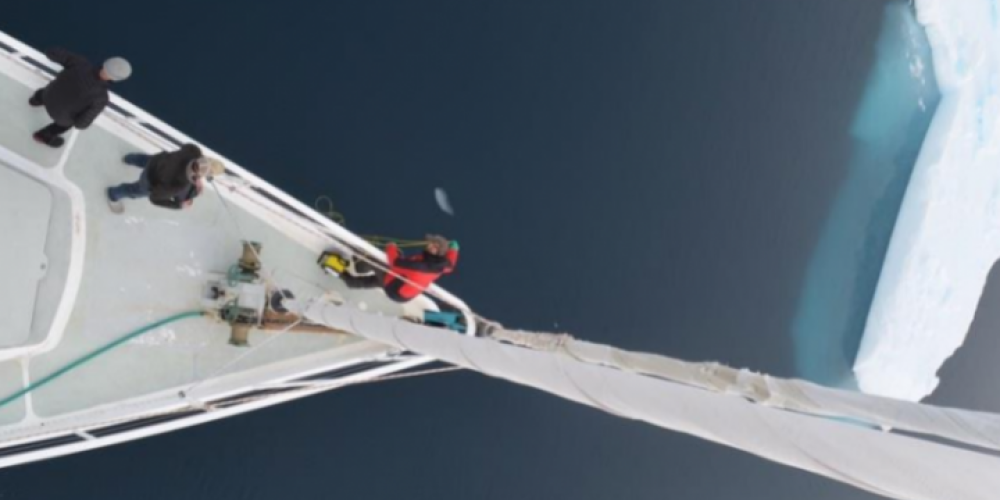
Read also on VUB Today: VUB scientist on prestigious international Antarctic expedition
They made it back in Belgium a few days ago, after several weeks exploring the coasts of the Antarctic. With Bruno Danis —a researcher at the Laboratory of Marine Biology of ULB’s Faculty of Sciences— at their head, the researchers on mission Belgica121 have completed the entire journey on a sailing ship! This is a first for this type of scientific mission, which was a resounding success as Bruno Danis explains: ‘The team was able to work in 15 stations and collect more than 1,700 samples in just 22 days in the area, despite the initial plan being to visit only 3 to 4 stations.’ And all this with a very low environmental impact, as the team’s CO2 emissions were 140 times lower than those of a traditional research mission on board an icebreaker.
High biodiversity…
The 1,700 samples are being shipped back to Belgium, and they should enable researchers to take stock of biodiversity in this area of the Southern Ocean. The overwhelming majority of studies done so far have dealt with the immediate surroundings of research stations, or with icebreakers’ habitual sea lanes. Mission Belgica121, however, travelled on the Australis, a sailing ship nimble enough to venture into areas that are inaccessible to much larger ships. This let the researchers collect samples in places where few or none had ever been collected before, at depths up to 20 metres. They recorded high levels of biodiversity, especially in terms of the combinations of species observed.
‘This is good news, as biodiversity is often synonymous with resilience —that is, the ability of an ecosystem to return to its original state following a disruption’, explains Bruno Danis. ‘The combinations of species appear to be directly linked to the condition of their environment, and more specifically to the state of the ice and the exposure to surrounding masses of water; this is contrary to what the literature generally suggests.’ The samples collected will undergo careful analysis in a laboratory, in order to understand the nature of the combinations of species using genetic and isotopic approaches. The analyses will also provide insight into how Antarctic marine ecosystems respond to changing climatic conditions: higher water temperature, changes in salinity, and the rapid melting of coastal glaciers.
…and human presence!
Another of the expedition’s purposes was to quantify the effects of human activity on this environment that —although it is generally considered to be protected— is now impacted by tourism. The researchers collected samples in 8 different stations in order to study the extent to which the Antarctic Peninsula is contaminated by micro-plastics and their co-contaminants (metals, persistent organic pollutants). ‘We could not help but notice the high level of tourism activity in the area we were studying. Many ships were sailing nearby, some of them with thousands of tourists aboard. Tourism in the region is nearing 70,000 visitors annually, a number that has been on the rise lately. Fortunately, this is still a highly regulated activity’, explains the head of the expedition. The researchers have also discovered refuse on certain sites, probably left behind in the 1980s. Some of it was taken away by the Australis.
The research mission’s outcome is very promising: ‘We must go into more detail analysing the samples we have collected, in order to record scientific findings. Still, the results so far are very positive! For instance, we have managed to demonstrate that getting 12 people on a 75-foot (23-metre) sailing ship, in sometimes choppy seas, could yield great results! We are hoping to pave the way to similar initiatives, especially considering that our preliminary results appear to show
unexpected levels of biodiversity.’
A documentary film, made possible by a crowdfunding campaign, will be produced about the research journey and released at the end of 2019.